Newsletter #5 (7/2025)
Announcements
Join us for the live launch of the MLSysOps open-source framework!
🗓 Date: Fri, Jul 18th, 2025
🕒 Time: 13:00 CET
📍 Where: Online (Zoom)
In this hands-on session, we’ll:
- Introduce the MLSysOps framework and why we built it
- Set up a testbed from scratch using our provided scripts
- Deploy the system and run a real-world example
- Showcase our policy API – and give a sneak peek at how ML blends in
- Walk you through what’s next and how to get involved
Project repo: https://github.com/mlsysops-eu/mlsysops-framework
Code, Create, Compete: The MLSysOps Hackathon is Here!
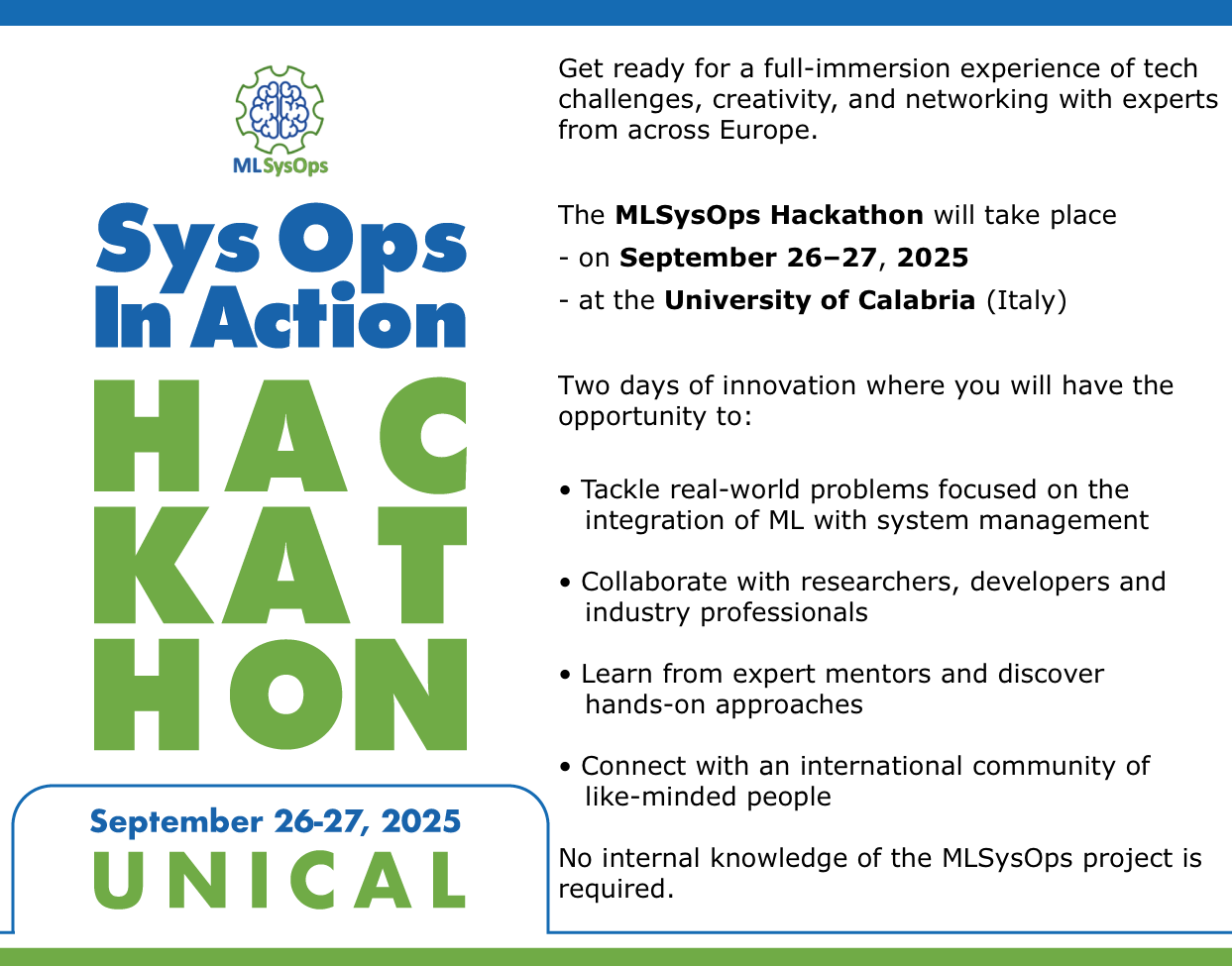
Partner News
NTT DATA Award at DTW25 Ignite exploiting MLSysOps results
We are proud to announce that NTT DATA Europe & Latam, together with the Telco Innovation and Network Engineering teams of EDGE&System Engineering, has won the prestigious award for Best Moonshot Catalyst in Telco Monetization at DTW25 – the most important global event for telecom systems innovation, organized by TM Forum and held in Copenhagen from June 17 to 19.
Together with our champions and partners, we presented a bold vision that earned this recognition: a fully standardized, end-to-end API-driven architecture leveraging CAMARA APIs, TM Forum Open APIs, and GSMA Open Gateway federation principles to interconnect multiple CSPs (Communication Service Providers) and deliver distributed MEC (Multi-Access Edge Computing) infrastructure across geographies.
Exploiting MLSysOps results, our Catalyst showcased the application of machine learning to dynamically select the optimal MEC based on the Automotive OEM’s KPIs (Key Performance Indicators). This approach leverages on NTT DATA contribution to MLSysOps EU project and not only enhances operational efficiency but also allows for the customization of services offered, adapting to the specific needs of customers.
Additionally, we implemented a fine-grained pay-per-use model capable of tracking and monetizing transactions at the level of individual API events. This means that every interaction with the API is monitored and evaluated, enabling more precise resource management and greater cost transparency for customers. By utilizing machine learning algorithms, we can analyze data in real-time, optimizing decisions related to resource distribution and improving the end-user experience.
In summary, our innovation has not only received prestigious recognition but also represents a significant step in the exploitation of MLSysOps results towards a future where machine learning and API-driven architectures can radically transform the telecommunications landscape, making services more agile, scalable, and customer-oriented.
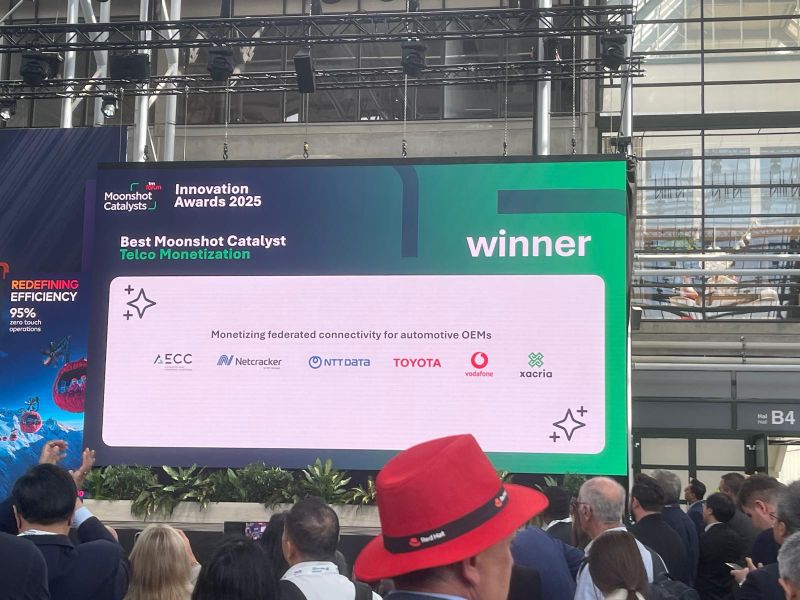
FhP-AICOS advances Far-Edge Computing with key publications
Fraunhofer Portugal AICOS is intensively disseminating its scientific outcomes in 2025.
Its deployment mechanisms for the Far Edge (FITA – Far-edge IoT device mAnagement) were recently published in the IEEE Open Journal of the Industrial Electronics Society, a quartile 1 Journal with citeScore of 10.8.
The initial outputs on the automated TinyML model partitioning for execution on a network of Far-Edge devices were published and presented at the Real-time And IntelliGent Edge computing (RAGE) workshop within CPS-IoT Week 2025. Additionally, the exploration of such outputs within the scope of IoT device management has been accepted and will be presented at the 2025 International Conference on Embedded Wireless Systems and Networks (EWSN).
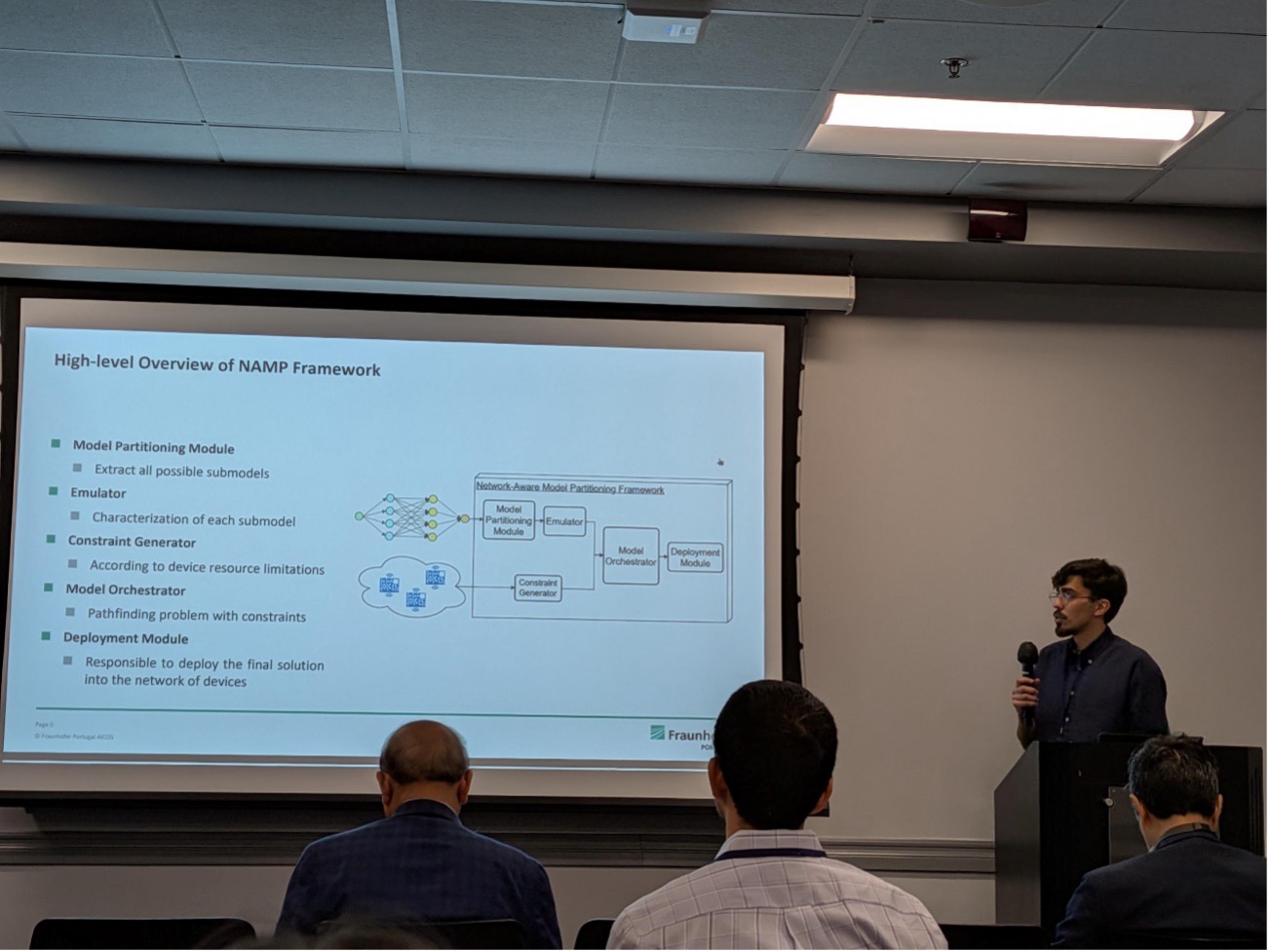
Chocolate Cloud uses ML to enhance S3-compatible object storage
As part of the MLSysOps project, Chocolate Cloud is enhancing its existing S3-compatible object storage service with dynamic storage policy capabilities powered by machine learning. Traditionally, users select a fixed storage configuration when creating a bucket—including redundancy level and geographic distribution—which remains static throughout the bucket’s lifetime. Within MLSysOps, we are introducing an adaptive system where storage policies evolve based on real-time usage. The system collects detailed metrics during object downloads—such as latency, throughput, and geographic access patterns—and uses an ML model to optimize the placement and redundancy of data fragments. This ensures user-defined requirements, such as minimum download speed or geographic restrictions (geofencing), are continuously met while minimizing operational costs across multi-cloud environments.
This dynamic approach brings several benefits to end users. First, it improves download speed and consistency by adapting to real-world traffic patterns, offering better performance than static configurations. Second, users gain greater control over data compliance through geofencing options, ensuring that data is only stored and served within approved regions. Third, the system intelligently balances cost and performance by adjusting redundancy and location to reduce storage and egress expenses—without sacrificing reliability. Combined with our use of Random Linear Network Coding (RLNC), which allows for secure and efficient fragment-based redundancy, this solution enhances resilience and privacy while maintaining strong performance and cost efficiency across geographically distributed infrastructures.
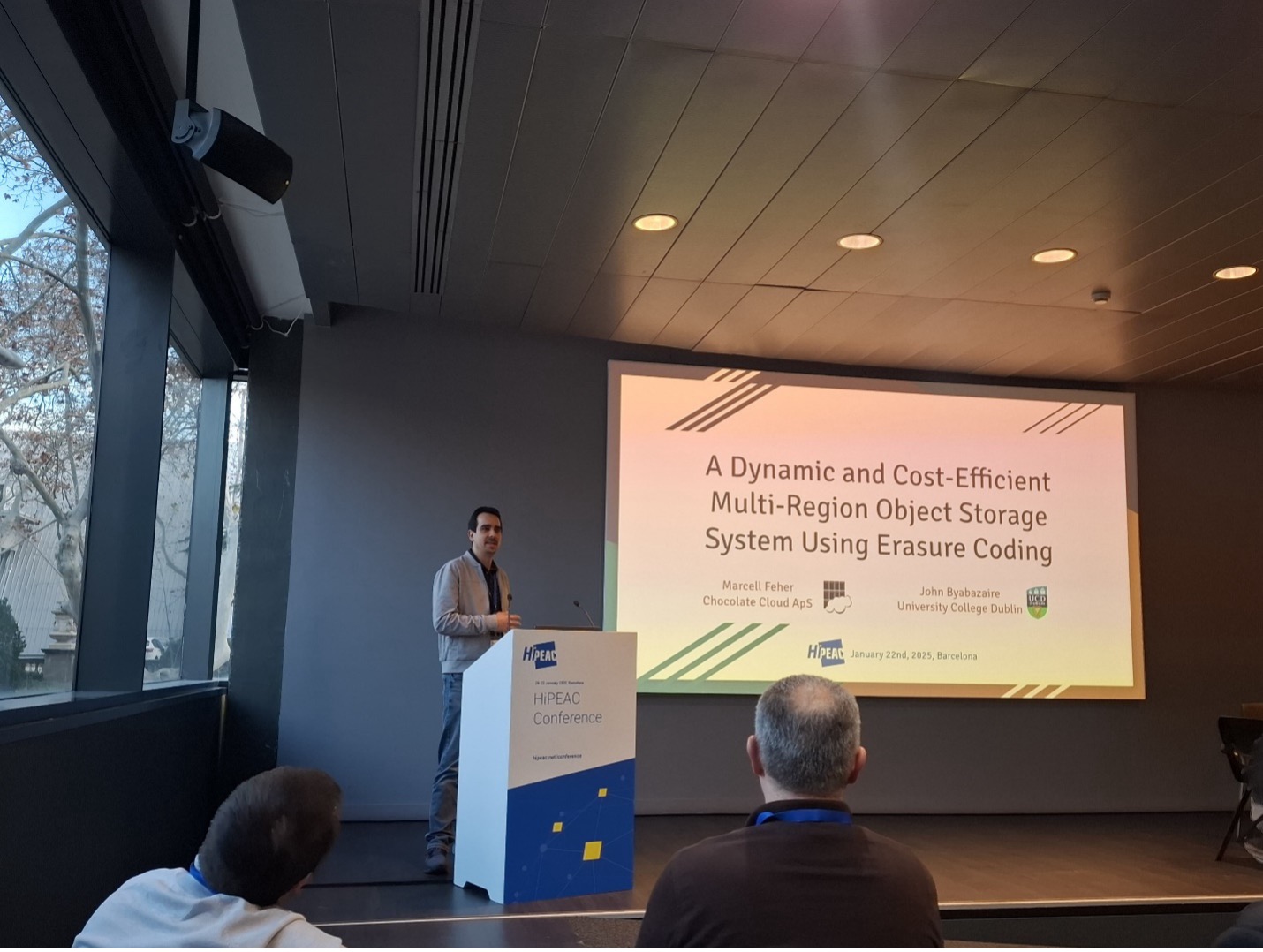
From SHIELD to Collaborative Intelligence: Inria’s Approach to 5G Jamming Detection
As part of the MLSysOps project, Inria has advanced 5G security research, progressing from on-device threat detection to network-wide collaborative intelligence. Our work began with the SHIELD framework, which enables scalable and cost-effective jamming detection by using native logs from mobile devices (UE) without needing costly external hardware. To enhance robustness, our GANSec framework then uses tailored Generative Adversarial Networks (GANs) to augment wireless time-series data. We demonstrated that anomaly detectors trained exclusively on this synthetic data achieve significantly better generalization when faced with new, unseen network conditions.
Most recently, in a work-in-progress paper presented at a workshop, we proposed a collaborative intelligence system that builds on this on-device capability. In this framework, individual devices report simple binary jamming indicators. These lightweight reports are aggregated by a fusion center to create a network-wide map of the attack and estimate the jammer’s location, providing scalable situational awareness with minimal overhead.
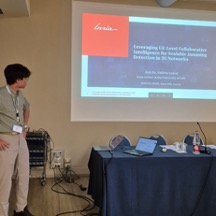
Ubiwhere – Our Smart Cities Playground Takes the Spotlight at Our Flagship Event
At Ubiwhere, we design the future of urban living by creating and testing cutting-edge technologies in real-world scenarios. A key part of this vision is our Playground — a dedicated space for experimentation, validation, and innovation.
This Playground consists of the installation of data collection and communication equipment for several urban use cases, including traffic monitoring, people flow analysis, and more. The setup includes three operational nodes (Node #0, Node #1, and Node #2), which allows the simulation and evaluation of city-scale solutions in a controlled environment.
The Playground plays a pivotal role in the MLSysOps project, serving as the foundation for its main use case. It enables us to test intelligent system orchestration, real-time data-driven decision-making, and scalable urban service deployments.
We had the opportunity to showcase this work during a major event organized by Ubiwhere – the FutuRegion SummerCamp – where we bring together partners, stakeholders, and city leaders to explore the impact of smart technologies. The Playground is not only a highlight of the event but also a tangible demonstration of our commitment to shaping more connected and efficient cities.
UTH Showcases MLSysOps at DataWeek 2025
Christos Antonopoulos of UTH represented the MLSysOps project at the 2025 DataWeek in Athens, in the session “MLOps, Continuous Learning, and Resource Management in the Edge-Cloud Continuum,” a workshop focused on AI-driven orchestration across distributed infrastructures. In his presentation, titled “ML-based Autonomic System Management in the Edge-Cloud Continuum,” he introduced the concept, architecture, and technical innovations of MLSysOps, highlighting its approach to enabling ML-driven scalable, adaptive, and efficient application management across heterogeneous computing environments. His talk emphasized the project’s contributions to ML-based automated resource management, resource-aware workload deployment, and the ML-assisted orchestration of complex application workflows.
Following the presentations, Christos Antonopoulos participated in a panel alongside experts from academia and industry. The discussion explored the practical challenges of integrating ML-driven methods into production environments, including the interfacing with legacy infrastructure, the availability and annotation of training data, and the deployment of resilient MLOps pipelines across the edge-cloud continuum. Christos contributed insights from the MLSysOps project’s ongoing efforts to build dependable and intelligent systems at the edge-cloud frontier, driven by the requirements of real-world applications.
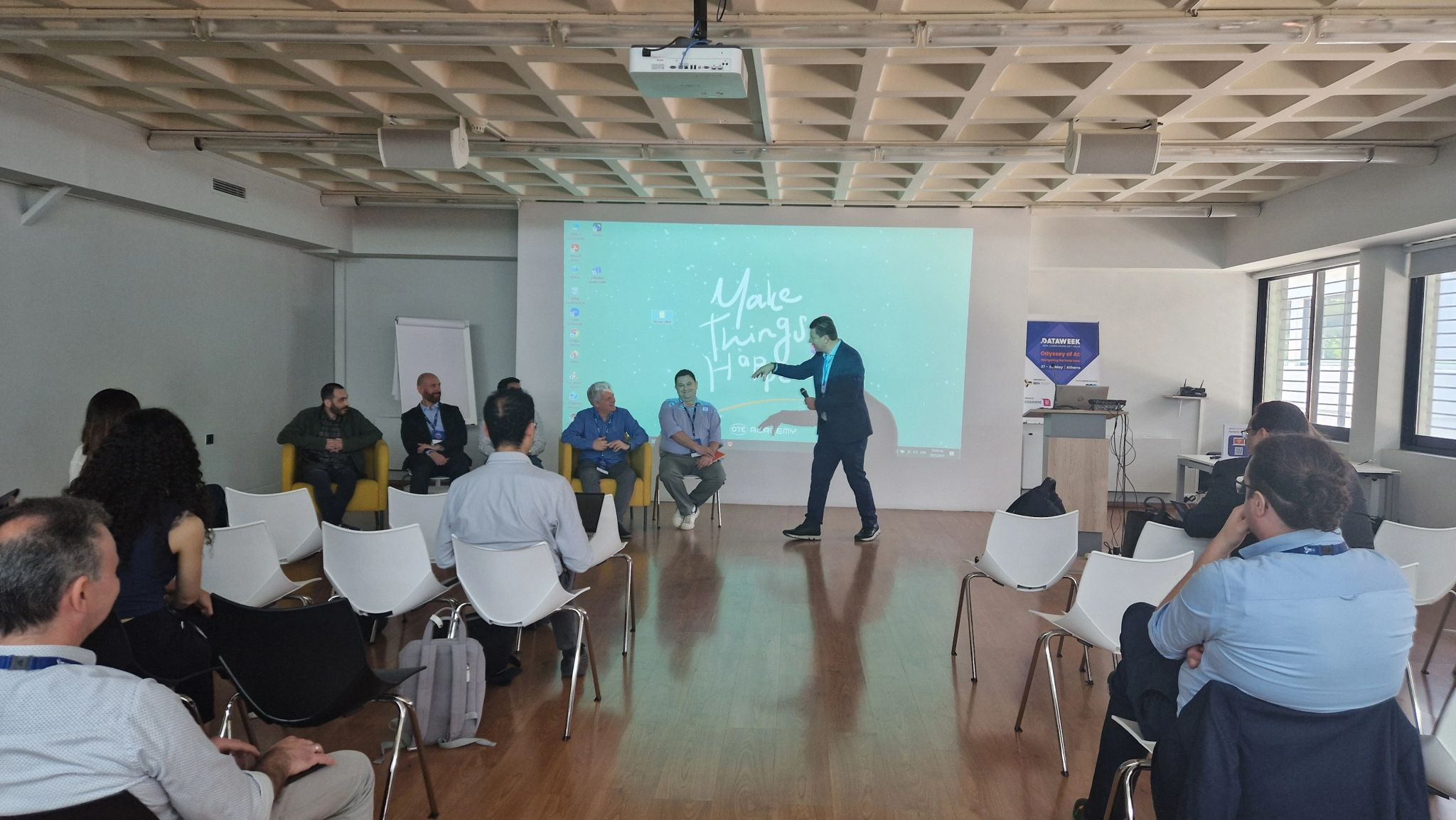
UCD – Advancing DRL Solutions for Cloud-Edge Resource Management
Theodoros Aslanidis of UCD presented his recent work “Cross-Domain DRL Agents for Efficient Job Placement in the Cloud-Edge Continuum” at EuroMLSys 2025, in Rotterdam, The Netherlands. This work is about designing Deep Reinforcement Learning (DRL) agents that can generalize across different cloud and edge infrastructures by learning infrastructure-agnostic state representations. He is also currently on a reseach visit at Aalborg University in Copenhagen to collaborate with Assoc. Prof. Sokol Kosta on optimizing AI workloads in heterogeneous datacenters, aiming to enable efficient workload distribution across both GPU-enabled and CPU-only nodes.
Events
MLSysOps workshop @ HiPEAC 2025
On January 22, the Machine Learning for Edge Computing Systems ( ML4ECS) Workshop took place as part of HiPEAC. The workshop provided a platform for leading researchers, industry experts, and practitioners to discuss the latest advancements and challenges at the intersection of machine learning and edge computing systems.
Throughout the day, we had the privilege of hearing interesting presentations, engaging in interactive discussions, and exchanging ideas. We would like to thank all speakers, participants, and co-organizers from the CODECO and EDGELESS projects who contributed to the workshop’s success. We look forward to building on the momentum and fostering collaboration in this rapidly evolving field.
The next edition of the workshop will take place in conjunction with HiPEAC 2026.
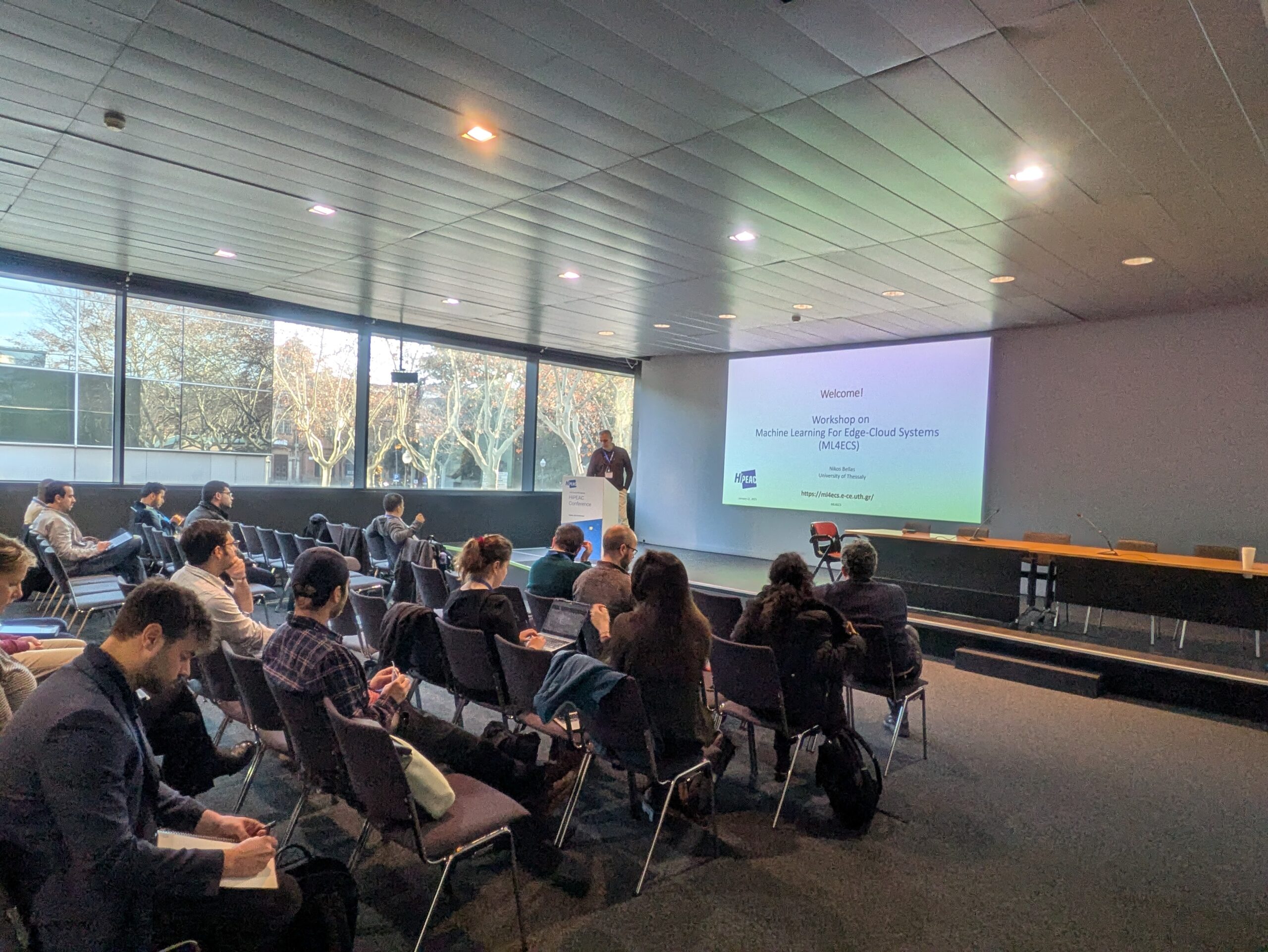
5th MLSysOps Plenary Meeting
On March 20–21, the consortium came together to sync up on technical progress and engage in hands-on discussions around system integration, machine learning, and open-source development.
Top highlights from the plenary:
- Deep dives into real-world use cases on precision agriculture (AUG) and smart cities (UBIW) covering their integration with the MLSysOps infrastructure.
- Exploring ML for system management – from anomaly detection and cluster scheduling to wireless threat detection and HPC workloads.
- Planning for industry & SME exploitation – turning technology into impact.
- Open-source repository and the organization of a hackathon event planned for this September.
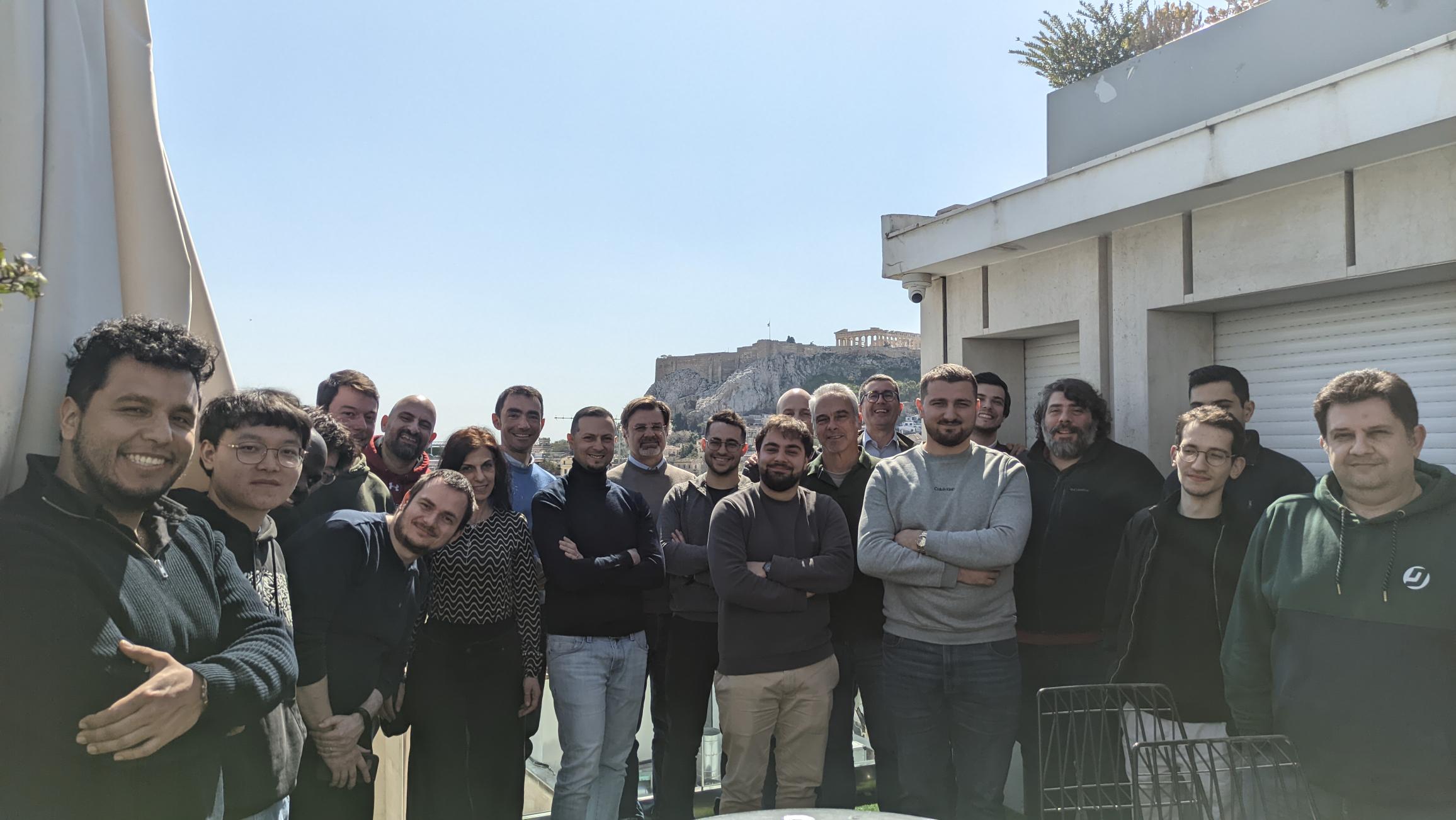
Publications
- C. Resende, J. Oliveira, F. Sousa, W. Moreira and L. A. Sousa, “ Improving Far-Edge Device Management in IoT Applications Using Kubernetes,” IEEE Open Journal of the Industrial Electronics Society, vol. 6, pp. 1027-1049, 2025
- Jiali Xu, Valeria Loscrì. “ Leveraging UE-Level Collaborative Intelligence for Scalable Jamming Detection in 5G Networks.” 4th Workshop on DIStributed COLlective Intelligence (DISCOLI 2025), in conjunction with IEEE DCOSS-IoT 2025, 9-11 Jun 2025, Lucca, Italy.
- Jiexiong Guan, Zhenqing Hu, Christos D. Antonopoulos, Nikolaos Bellas, Spyros Lalis, Evgenia Smirni, Gang Zhou, Gagan Agrawal, Bin Ren. “TMModel: Modeling Texture Memory and Mobile GPU Performance to Accelerate DNN Computations”. 39th International Conference on Supercomputing, (ICS). June 8-11, 2025. Salt Lake City, UT.
- Aya Moheddine, Valeria Loscri. “ Identifying and Exploiting a Denial-of-Service Vulnerability in the NGAP Protocol in 5G Networks.” European Conference on Networks and Communications 2025 EuCNC & 6G Summit, 3-6 Jun 2025, Poznan, Poland.
- Anastassios Nanos, Charalampos Mainas, Konstantinos Papazafeiropoulos, Apostolos Giannousas, Ilias Lagomatis, Aristotelis Kretsis. “ MLIoT: Transparent and Secure ML Offloading in the Cloud-Edge-IoT Continuum“. Robotic Systems in the Edge-Cloud Continuum (RISE 2025) workshop, in conjunction with the 25th IEEE International Symposium on Cluster, Cloud and Internet Computing (CCGrid 2025), May 19-22, 2025, Tromsø, Norway.
- Rego, F., Oliveira, J., Sousa, F., & Almeida, L. (2025). “ NAMP: A Network-Aware Model Partitioning Framework for Constrained Devices.” The 4th Real-time And intelliGent Edge computing workshop (RAGE 2025), May 6, 2025, Irvine, California, USA. [Also available here.]
- Theodoros Aslanidis, Dimitris Chatzopoulos, Spyros Lalis, “ Cross-Domain DRL Agents for Efficient Job Placement in the Cloud-Edge Continuum“, The 5th Workshop on Machine Learning and Systems (EuroMLSys), in conjunction with EuroSys ’25, March 31st 2025, Rotterdam, The Netherlands.
- Seraphim, R., Oliveira-Jr, A., & Moreira, W. (2025). “ Radio Resource Optimization in LoRa IoT Networks for Smart Cities: An Approach Based on the Firefly Algorithm.” 23rd International Conference on Pervasive Computing and Communications (PerCom 2025), March 17-21, 2025, Washington, DC. [Also available here.]
- Andrea Pazienza and Massimiliano Rossi. “ Reinforcement Learning Training Strategies for 5G Networks Latency Optimization“, Machine Learning for Edge-Cloud Systems (ML4ECS) Workshop in conjunction with HiPEAC 2025, 20-22 January 2025, Barcelona, Spain.
- F. Pournaropoulos et al. “ Adaptive Application and System Management Across the Mobile-Edge-Cloud Continuum: A Smart Agriculture Use Case“, Machine Learning for Edge-Cloud Systems (ML4ECS) Workshop in conjunction with HiPEAC 2025, 20-22 January 2025, Barcelona, Spain.
- Alexandros Patras, Nikolaos Bellas, Christos D. Antonopoulos and Spyros Lalis. “ Managing Computational Resources with Machine Learning Policies“, Machine Learning for Edge-Cloud Systems (ML4ECS) Workshop in conjunction with HiPEAC 2025, 20-22 January 2025, Barcelona, Spain.
- Nawaz Ali, Gianluca Aloi, Floriano De Rango, Claudio Savaglio, Raffaele Gravina. “ Edge-cloud continuum driven industry 4.0“, International Conference on Industry 4.0 and Smart Manufacturing (ISM 2024), 20-22 Nov. 2024, Prague, Czech Republic.
- Charles Robinson, Spyros Lalis, Danh Le Phuoc, Alois Zoitl, Octavian Fratu. “ Bridging Domains in Large-scale Complex and Critical Systems“, HiPEAC 2025, 20-22 January 2025, Barcelona, Spain.
Consortium
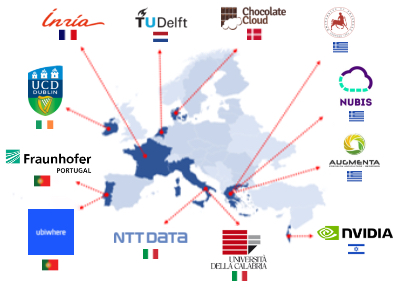

The “MLSysOps” Project is funded by the European Community’s Horizon Europe Programme under Grant Agreement #101092912.
Copyright © 2025, MLSysOps EU Project, All rights reserved.
